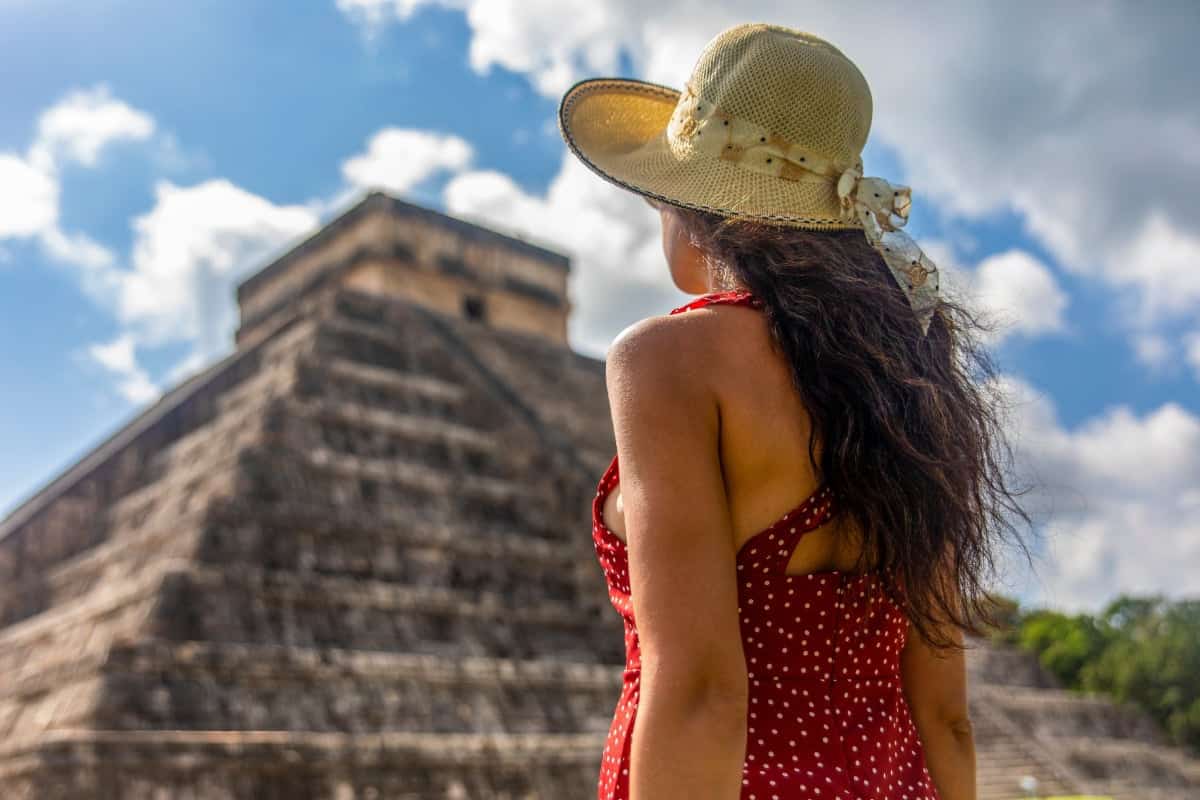Mexico has been simply exploding with tourism recently, with a record number of International arrivals each year since the pandemic.
Despite recent travel warnings, it’s clear that visiting this vast and stunning country remains a safe option for travelers looking for everything from world-class cities, magic towns, epic beaches, and ruins scattered throughout the country.
One area of Mexico that has seen a massive increase in tourism is the Yucatán Peninsula, home to hotspots such as Cancun, Tulum, Bacalar, Merida, and numerous others. One of the Yucatán’s main draws is the UNESCO World Heritage Site of Chichén Itzá.
Nearly two million tourists visit the world-famous Mayan ruin complex of Chichén Itzá each year, and with the recent announcement of a new on-site museum planned to open in 2023, that number is only expected to grow.

As one of the most popular tourist attractions in Mexico, the impressive ruins are a large pre-Columbian city built by the Mayan people.
The location near the popular areas of Cancun, Merida, and Valladolid makes the site an easy addition to any Yucatán itinerary.
Mexico’s National Institute of Anthropology and History are planning on rehabbing a long-shuttered space that housed a prior museum, investing around $14 million for the renovation to make the new museum a massive draw for tourists.

One main reason for the new museum is to meet the projected increase in tourism that the new Maya train will bring once it opens later this year.
The massive construction of the long-awaited Maya train has caused controversy in the past, with an increasing amount of ruins and artifacts discovered during the construction.
The new museum not only hopes to attract more tourists but also will house many of the archeological finds that were unearthed during the Maya train development.

In addition to the exciting new Chichen Itza Museum, Mexican officials have also announced two other museums opening later this year in the Yucatán Peninsula:
In the southwest of the Yucatán state, you can find the archaeological zone of Kabah, located in the Puuc region, about 20km south of Uxmal. A new museum is planned for this site as well, with the Puuc Archeological Park scheduled to open later this year.
The museum will eventually cover about 4,800 square meters and will also be dedicated to exhibiting artifacts unearthed during the Maya Train construction.

The new addition aims to help visitors further understand the importance of the Puuc culture, important to both the history of the Yucatán, but also for its renowned architectural beauty.
Nearly 15km outside the city of Merida lies the Dzibilchaltun Site archeological zone, a Mayan site of great cultural importance and home to the Temple of the Seven Dolls, a structure that is known for its astronomical alignment.
The new Dzibilchaltun Site Museum will be rebuilt to showcase the Pre-Columbian ruins that researchers have been studying in the past years. The new museum hopes to help visitors get a feeling of what ancient life was like in the urban areas of Yucatán.

All the planned museums are set to open later this year, and while official information for some of them is a bit more secretive, they are all being warmly welcomed by the community.
The new sites aim to preserve Mayan heritage, as well as to ensure the culture is appropriately recognized, partly in attempts to smooth over any strife from the Maya train development controversies.
Mexico is planning that these new Mayan museums located across the Yucatán Peninsula will help to boost the state’s UNESCO World Heritage, moving it to the forefront of the cultural stage. As cultural tourism has been trending in recent years, the increase in visitors to the state will likely be welcome as well.


